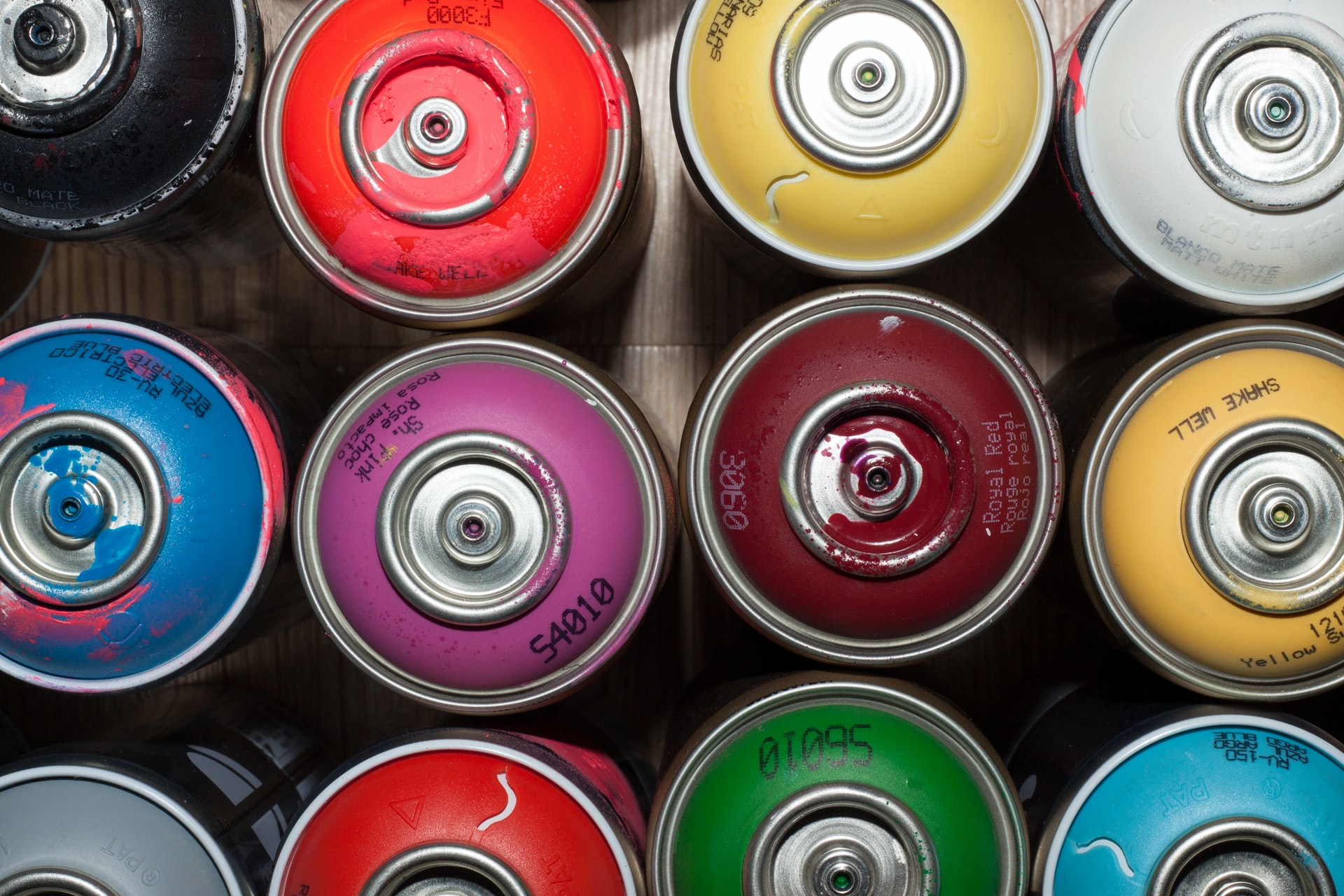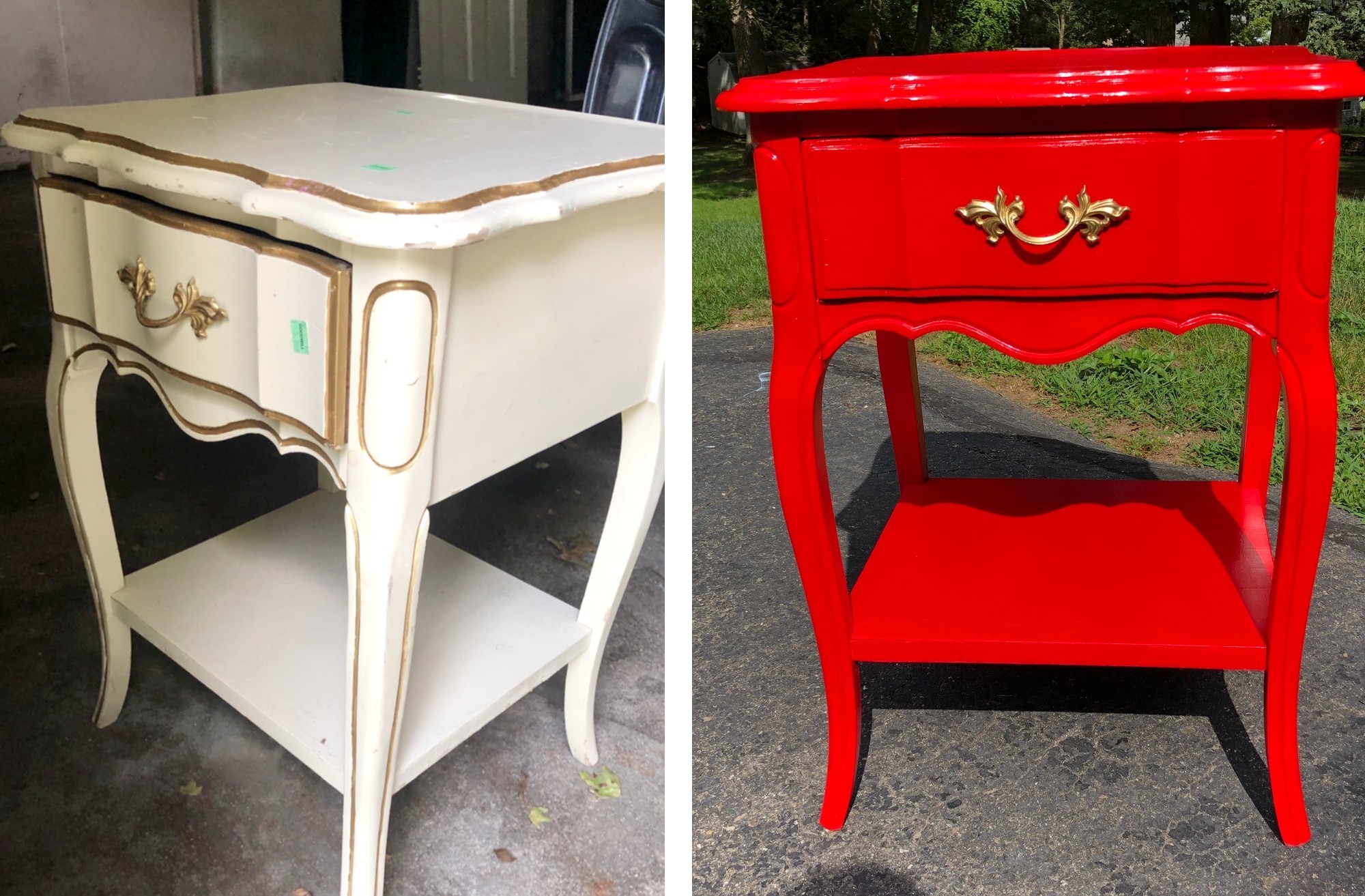How to spray paint furniture
Spray paint can upcycle your old furniture, no matter the material


If you aren't handy with a brush, spray paint can work magic on any kind of furniture – wood, metal, and even plastic. Spray paint has quite a few perks compared to its brush-applied counterparts. There is typically little prep or sanding needing, it boasts super-fast dry times, and you don't have to worry about pesky brush strokes showing up in your work.
Wondering how to paint furniture for the best results?
While spray painting furniture doesn't take any special skills, you do want to take care to apply properly to avoid drips and bare spots. Whether you're looking to paint wood furniture, metal, or plastic, here's what you need to know.
Get started on your next project with our best paint for furniture guide.
General spray paint tips
Whatever material you're spray painting, you want to be sure to work in an open, well-ventilated space. And since we're all used to wearing masks these days, painting should be no exception. Wear either a disposable or reusable painting safety mask while you work, though the latter is best for spray painting.
Additionally, be sure to wear gloves and avoid working on a windy day. No matter what, plan on wearing clothes you are okay with getting some paint on. You never know when the wind direction may change and you can end up with a little blowback.
Always be sure to work on a drop cloth or completely covered surface. Cover any nearby items you would not like painted, and be sure you have sufficient lighting to work with.
Get small space home decor ideas, celeb inspiration, DIY tips and more, straight to your inbox!
Finally, make sure your furniture is smooth, clean, and dry before beginning your work. For the most part, you don't need to worry about sanding your piece down to its bare bones, but you don't want large flakes of old paint hanging around. They will result in a bumpy job or peeling paint in the future.
The best weather for spray painting
When it comes to the best weather for spray painting, think like Goldilocks: not too hot, not too cold. According to paint company Krylon, ideal painting temperatures should be between 50°F and 90°F. Humidity should also be under 85 percent, and you should avoid painting in direct sunlight.

Before & after: An old nightstand got a glossy red spay paint makeover for its new home in a kids room.
How to spray paint wood furniture
Once you've prepared your workspace, the first thing to do is to prep your wood furniture. The industry term for the process is SVT. It stands for sand, vac, and tack.
If you opted for a spray paint like Rust-Oleum's Chalked, you're probably thinking, "it says no surface prep or priming needed." It's true, you won't need to sand your piece to bare wood before painting.
That said, you want to make sure to sand away any loose, flaking pieces of paint so that you have a smooth surface to work with. The next step, vac, is important to get rid of any dust. You don't need a high-quality shop vacuum for this. Just use the brush attachment on your standard vacuum.
Finally, tack means to remove any residual dust with a damp microfiber cloth (dry works too if you piece didn't need a ton of sanding). Once your piece is completely dry, you're ready to paint. If the item has a particularly dark finish, take the extra step to start with a bonding primer. This will prevent any of the old finish from bleeding through.
Once the primer is dry (or if you are skipping this step), paint with your choice of enamel. Shake the can of spray paint according to directions. Then, holding the nozzle about 12 inches away from your piece, build up your base coat by spraying light coats in a sweeping motion, releasing your finger from the valve after each spray. Give it a few minutes to dry, then apply another light coat until you achieve the desired level of coverage. You could also use one of the best paint sprayers.
Let your piece fully dry for 24 hours. If your piece is going to get a lot of traction — like a dining room table — finish with a clear coat to seal in your paint job.
How to spray paint metal furniture
A fresh coat of spray paint can turn a rusty old patio set into a brand-new treasure. For this, you'll want to opt for a high-performance enamel paint that can stand up to the elements.
Use a metal brush and sandpaper to remove any rust spots and loose paint and dull your surface. You want it to be scoured to bond well, but don't scratch too much or you will end up with an uneven surface. Use a damp microfiber cloth to wipe away any remaining debris and dust.
Once the piece is completely clean and dry, lightly apply a primer formulated for metal. Allow it to dry completely before applying your enamel. Paint as you would with wood furniture, applying light coats by finely misting your piece from side to side. Stop after every few passes to shake your can of spray paint. Your piece should be dry and ready to go after 24 hours.
How to spray paint plastic furniture
If you have drab plastic chairs, give them a fun makeover with spray paint! Since there's no sanding involved, the process is pretty seamless. Start by cleaning your piece with hot water and an all-purpose sponge. Dry it completely using a microfiber towel before letting it air dry.
Unless your chair is particularly dark, you shouldn't need a primer. Just be sure to use a spray paint that is formulated for plastic so that it will stick. Apply using the same light, back and forth technique used for wood and metal furniture until you've reached your desired color saturation.
Keep reading:
After serving as an editor for luxury publications for nearly a decade, Ann Loynd Burton struck out on her own as a freelance writer covering design and lifestyle. Along with her work highlighting decor trends for Real Homes, Loynd Burton has covered interiors for such publications as Apartment Therapy, Aspire, Cottages & Gardens, and Galerie.
